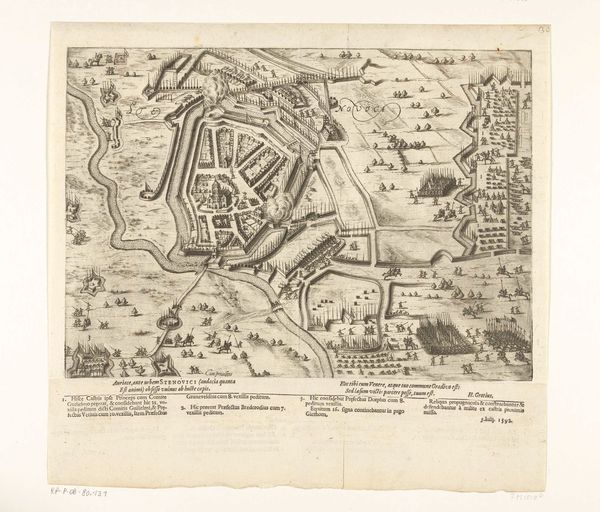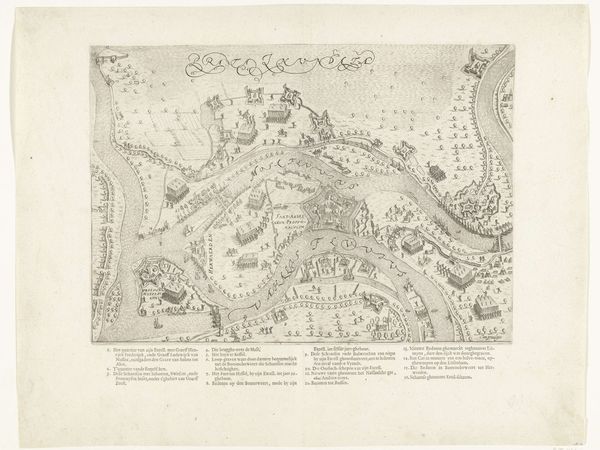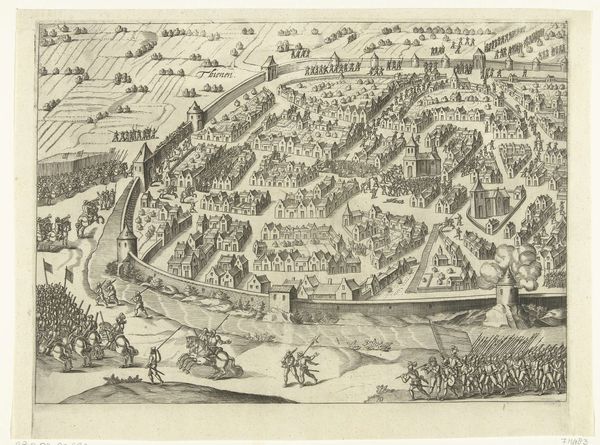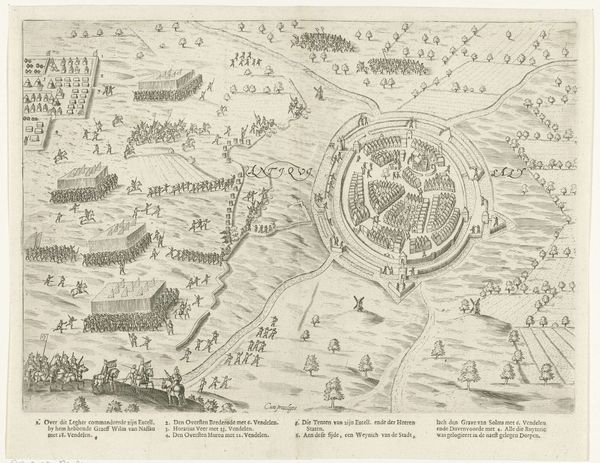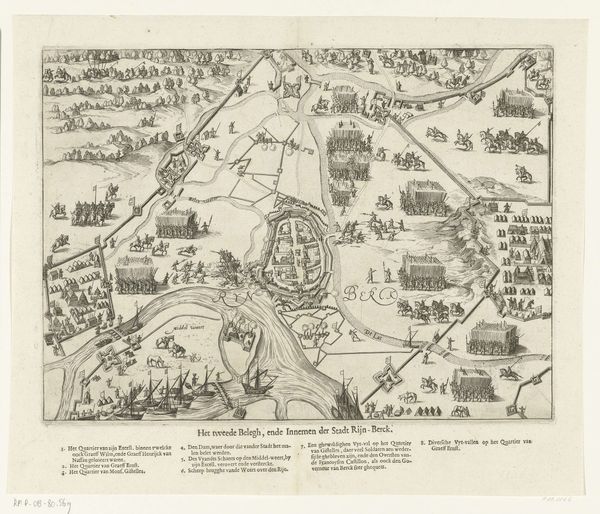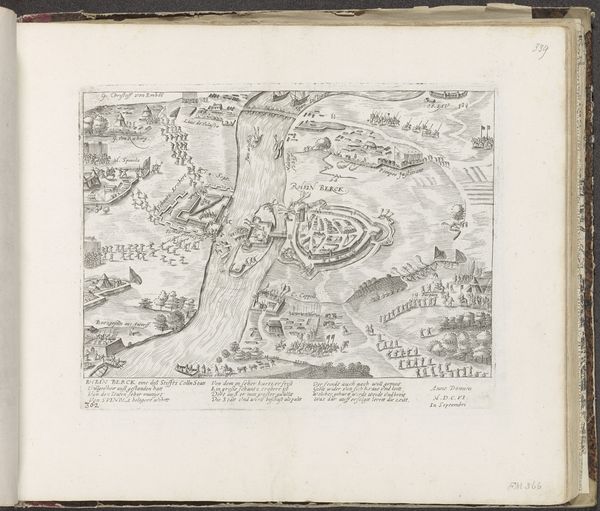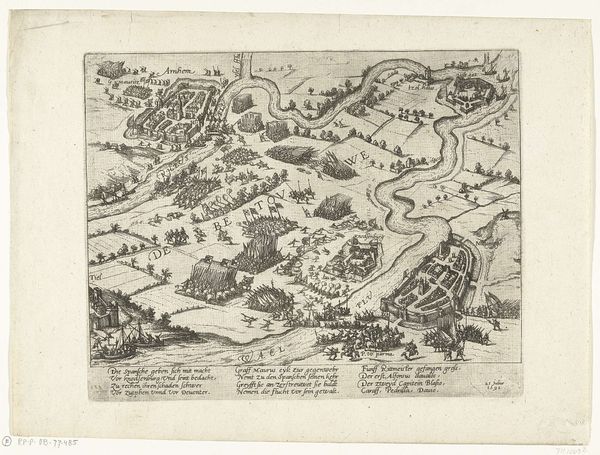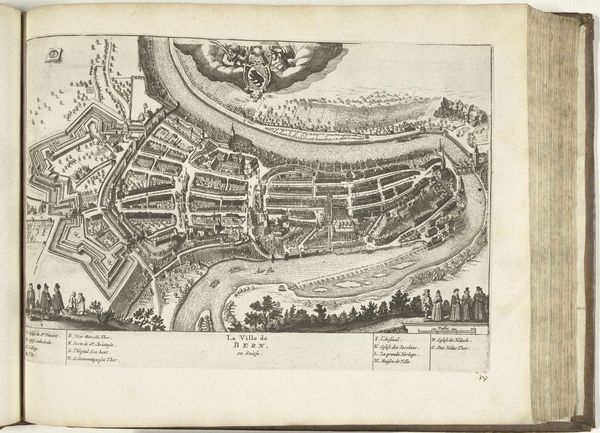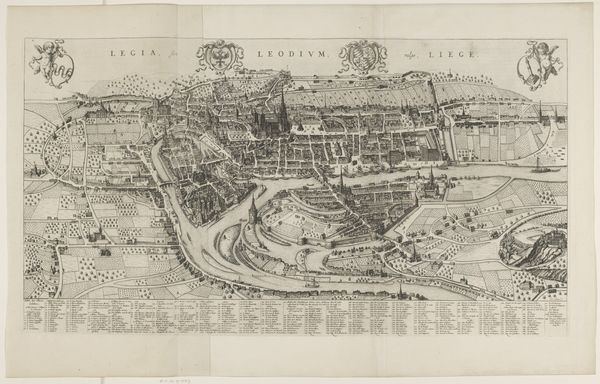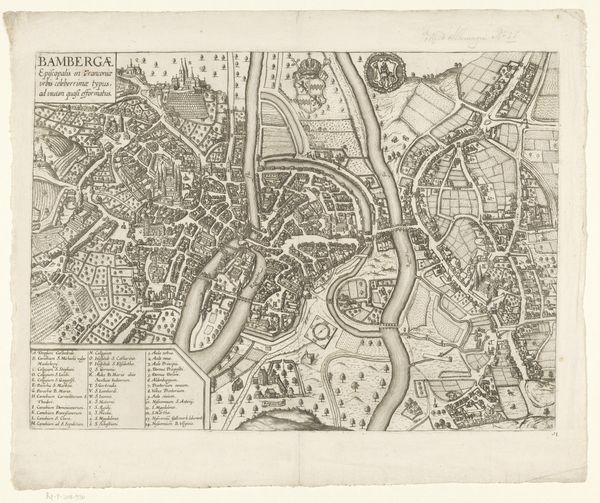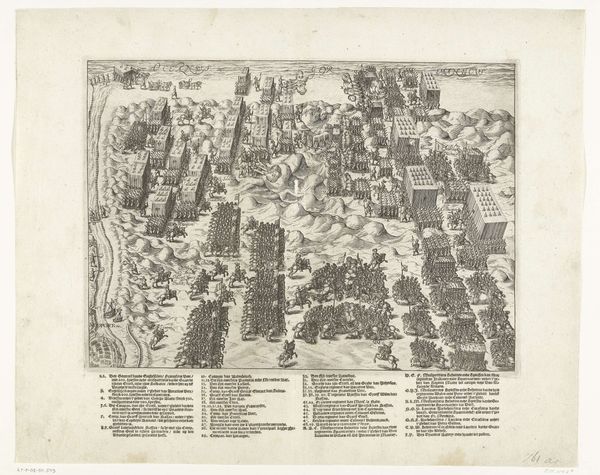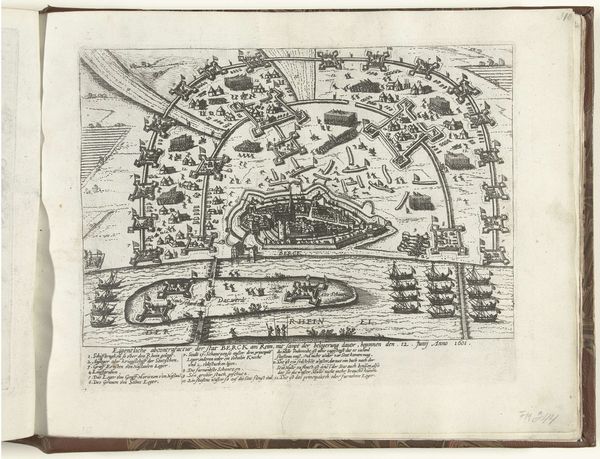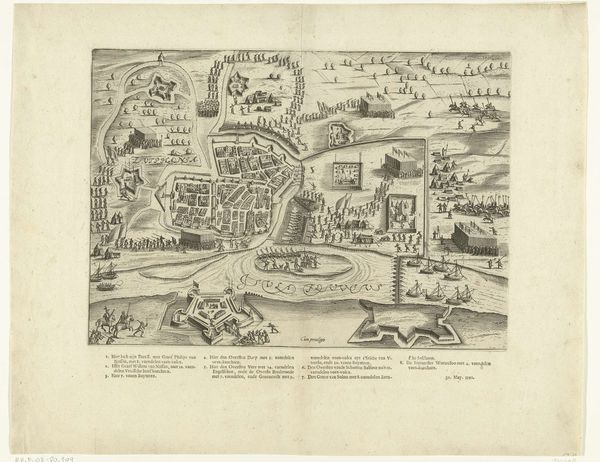
drawing, print, ink, engraving
#
drawing
# print
#
old engraving style
#
perspective
#
ink
#
pen-ink sketch
#
pen work
#
cityscape
#
history-painting
#
northern-renaissance
#
engraving
Dimensions: height 306 mm, width 413 mm
Copyright: Rijks Museum: Open Domain
Editor: Here we have Pieter Bast’s “Siege of Nijmegen, 1591,” dating from around 1600 to 1610. It’s an engraving done with ink. The sheer detail is incredible, a kind of map-meets-battle-scene. How would you interpret this work from a formalist perspective? Curator: Formally, the artist presents a comprehensive overview by deploying line and perspective to capture Nijmegen’s siege. Notice the meticulous arrangement; the upper zone containing the city proper, the middle the river, and the lower zone an additional fortification. How does this layering strike you? Editor: It creates depth, I think, guiding the eye. It almost feels like a stage. What about the visual rhythm created by the massed figures and buildings? Curator: Precisely. The rhythmic repetition of figures, buildings, and fortifications creates a visual texture. Observe the geometric forms. Do these formal elements express a certain order in what must have been chaos? Editor: They do. The geometric structure brings a sense of imposed order. Almost a rationalization of conflict. The artist, perhaps, trying to make sense of the chaos through structure? Curator: It also showcases an analytical approach through design, a kind of deconstruction of space and events onto a single plane. Editor: So by analyzing its structure, composition, and deployment of perspective, we gain a clearer understanding. Curator: Precisely, and appreciate the way formal decisions inform the understanding of historical depiction. A valuable experience, wouldn't you say?
Comments
No comments
Be the first to comment and join the conversation on the ultimate creative platform.
